We have treated more than 84,000+ patients on our mission to save one million lives.
84,000+ patients treated on our mission to save one million lives.
The Devastating Effects of Marijuana Abuse

1 in 10 users of marijuana will develop an addiction
Marijuana, also known as cannabis, is a commonly used drug that can cause both short-term and long-term damage to an individual’s physical, mental, and emotional well-being.

Contact Recovery Centers of America Today
If you are struggling with marijuana it is essential to seek medical help and support immediately. Recovery Centers of America’s team of medical and mental health professionals is here to provide comprehensive addiction care to help you overcome substance use disorder and achieve long-term recovery.
- Contact 1-800-RECOVERY to speak with a treatment advisor 24/7/365
- No cost intervention services available exclusively through RCA
- Verify your insurance benefits here
- One of our transportation specialists will pick you up wherever you are in 2 hours or less
Don’t wait another day to get the help you need. Contact the RCA team today to begin the journey towards a healthy, fulfilling life. We are committed to supporting you every step of the way, providing personalized treatment options and evidence-based therapies to help you achieve your goals.
Together, we can overcome your marijuana addiction and build a brighter future.
Contact Recovery Centers of America now and take the first step towards long-lasting recovery.
An Evidence-Based Continuum
Our Unique System of Care, Guided by The RCA Care Model
The Core Tenets of Our Care Model
There are six core tenets that we’ve determined to be essential for every patient to achieve sustained recovery.
Medications for Addiction Treatment
Medication to help reduce cravings, maintain long-term recovery, and decrease the likelihood of relapse.
12-Step Recovery Support
The 12 steps and other recovery support programs are integrated throughout the process, with meetings held daily.
Dialectical Behavior Therapy (DBT) Skills
Evidence-based skills training and coaching to help manage emotions, cope with crisis, and improve relationships.
Family Involvement
Family support services including engagement, education, support groups, and other resources.
Alumni
The Alumni program helps ease the transition back into daily life and provides long-term sober supports.
Measurement-Driven Care
Industry leading measurement methods track patients’ success and incorporate data into treatment feedback.
Our caring and experienced staff are dedicated to providing personalized care to each person struggling with addiction to promote a healthy and sustainable recovery.
Don’t let drugs or alcohol control your life – contact Recovery Centers of America today to get the help you or your loved one needs to start on the path to recovery.

How Marijuana Impacts Your Life

Physical

Psychological

Financial

Social
Marijuana Addiction Statistics
Approximately half of Americans, some 78 million people, claimed to have used marijuana at some point in their lifetime.
1 in 10 users of marijuana will develop an addiction
Long-term marijuana use can lead to respiratory problems, memory impairment, and other cognitive changes
Marijuana use has been linked to an increased risk of psychosis, including schizophrenia, especially in individuals who start using at a young age
What is marijuana?
Marijuana comes from cannabis plants, native to Central and South Asia. The plant’s leaves, flowers, stem, and seeds are all rich in THC (tetrahydrocannabinol), the major chemical that creates the drug’s psychoactive effects.
THC affects brain receptors associated with memory, pleasure, coordination, and judgment. When these receptors are stimulated, the classic marijuana “high” takes effect, typically accompanied by distorted sensual perceptions, changes in mood, and impairment of mental functioning.
What is the history of cannabis?
Recreational and religious cannabis use goes back literally thousands of years. Charred seeds have been found in a ritual brazier in Romania, at a burial site dated to the third millennium BC. At about the same time (roughly 2700 BC), the Chinese medical encyclopedia Pen Ts’ao, compiled by emperor Shen-Nung, referred to ma (the Chinese name for cannabis) as a medicine that uniquely balanced yin and yang forces. The drug was recommended for treating menstrual cramps, gout, rheumatism, malaria, and (ironically enough, given that modern medical science considers marijuana use a potential source of permanent memory damage) absentmindedness. In the early second century, Chinese doctor Hua T’o used cannabis as a surgical anesthetic.
The drug got considerably less respect in mid-twentieth-century America, where it became associated with teenage rebellion and getting high for the fun of it. Use was illegal throughout the United States until 1996, when California approved marijuana for use in medicine. Currently, twenty-nine states and the District of Columbia allow some level of legal use; as of late 2017, however, the drug remains a Schedule I substance (no recognized medical use) under federal law. The FDA does recognize two cannabis-derived nausea medications, dronabinol and nabilone.
What are the side effects of marijuana use?
Marijuana affects virtually every part of the body and nervous system. Common physical reactions include red eyes, dilated pupils, dry mouth, increased appetite, dizziness, a distorted sense of time and place, hallucinations, accelerated heart rate (sometimes to double speed), and slowed reaction times.
Initial effects of a single dose last only a few hours, but regular users may also develop chronic coughing or respiratory infections from frequent smoking. If they continue using for the long term, other effects that may eventually surface include heart and blood pressure problems, lung damage, impaired memory, panic attacks, flashbacks, sexual dysfunction, or cannabinoid hyperemesis syndrome (chronic and severe vomiting).
What are some historical and medicinal uses for marijuana?
Traditionally, marijuana’s mind-altering effect made it a popular tool for inducing mystic experiences. As noted above, it was also used in classic Chinese medicine.
Today, Western medicine is exploring new options for medical use of marijuana, particularly in relieving chronic pain. Other medical conditions for which a doctor might prescribe marijuana include multiple sclerosis, digestive difficulties, seizure disorders, glaucoma, and Crohn’s disease.
How is marijuana used illicitly?
Outside of medically monitored use, marijuana is most commonly smoked in hand-rolled cigarettes (joints), pipes, or vaporizers. Some smokers opt for “blunts” (cigars in which some or all of the tobacco has been replaced with marijuana). Other users take it in tea or mixed with food—a potential risk if someone used to the quicker effects of inhalation eats more with the idea of speeding things up.
A more dangerous approach is “dabbing,” which involves smoking marijuana resins heated with butane, and delivers a much stronger THC dose than the standard marijuana derived from solid parts of the plant.
Marijuana remains the most commonly used illicit drug in the United States. It is smoked recreationally to induce euphoric or spiritual experiences, and as self-medication by chronic-pain sufferers who can’t obtain legal medical marijuana.
What are the signs of marijuana use?
Symptoms of frequent use include: bloodshot eyes, lethargy, fast heart rate, increased appetite, strange odors on clothes or breath, mental confusion, and hyperactivity.
What are the signs of marijuana addiction?
The signs and symptoms of marijuana addiction and dependence (marijuana use disorder) include: loss of interest in usual activities, increased secretiveness, mood and sleep difficulties, and irritability.
What are the symptoms of using too much marijuana or a marijuana overdose?
Symptoms of a marijuana overdose (frequently from “dabbing”—but as with many illicit drugs, the more common form of marijuana has become stronger and thus riskier than it was a generation or two ago) include: severe agitation, vivid hallucinations, psychosis, hammering heart, pale complexion, gasping for breath, and severe shakiness. While marijuana overdoses are rarely fatal in themselves, they may trigger suicidal or psychotic behavior and even cardiac arrest. Call for emergency medical help.
